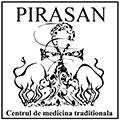Cardiomyopathy, also called cardiopathy, is a disease of the myocardium, manifested by structure alterations of the cardiac muscle tissue, by cardiac activity disorder and reduction of the cardiac functions. As the cardiomyopathy develops, the heart’s capacity of pumping blood into the body consequently diminishes.
If neglected, cardiomyopathy may cause: heart failure (because of myocardium deterioration, the heart does not pump the necessary amount of blood into the body any more. Therefore, the body retains water and salts; the cardiac rate and the heart size grow – which will lead to diminishing the strength of the cardiac tissue); arrhythmia (abnormal cardiac rate); thromboembolism (blood clots that may obstruct the supply with blood of certain vital organs: lungs, heart, brain etc.); myocardial infarction; endocarditis (bacterial infection of the inner cardiac sheath); sudden death.
The main types of no ischemic cardiomyopathy are: dilated cardiomyopathy, hypertrophic cardiomyopathy, restrictive cardiomyopathy, arrhythmogenic left ventricular cardiomyopathy.
Dilated Cardiomyopathy
Dilated cardiomyopathy is the most frequent type of cardiomyopathy. It occurs in adults between 20 and 60 years of age. It often develops, causing specific complications: heart failure, arrhythmia, thromboembolism, sudden death. The origin of this type of cardiomyopathy may be idiopathic, genetic, viral or immune, alcoholic, toxic or associated with other cardiac diseases (high blood pressure, coronary diseases).
Upon the onset, the left ventricle wall becomes thinner because it is dilated and enlarged, extending the capacity of the ventricular cavity. The systolic disorder occurs. The congestive process seizes also the right ventricle and later the atria. Thus the heart grows larger while the myocardium becomes weaker. Both the cardiac capacity and the blood amount pumped to the body are diminished. The diminishing of the cardiac function affects the kidneys, the lungs, the liver and other systems of the body.
Some of the symptoms are: chest pain, palpitations, irregular and fast pulse, fatigue, suffocation episodes during physical effort and rest, cough, swoon, edema in the lower limbs, prominence of the jugular veins, diminished appetite and concentration capacity.
Hypertrophic Cardiomyopathy
In hyperthrophic cardiomyopathy, the myocardium wall grows thicker and it loses its elasticity especially in the septum area (the muscle wall separating the two ventricles). Should the structure alterations of the septum obstruct the blood circulation from the left ventricle to the aorta, then the disease is called obstructive hypertrophic cardiomyopathy.
Generally speaking, hypertrophic cardiomyopathy is asymptomatic or it generates a minor symptomatology. Where it exists, its symptoms are: palpitations, pains or pressure in the chest, suffocation, swoon, permanent fatigue. In particular cases, the patient may die suddenly as a result of heart failure.
Restrictive Cardiomyopathy
It is a rare type of cardiomyopathy, defined by hardening of the ventricular walls and by their incapacity to dilate as the ventricles are filled with blood. There occur disorders of the diastolic rate. As symptoms, the patient mentions the following: disorders of the cardiac rate, which feel as palpitations, pains or pressure in the chest, diminished appetite, distension and nausea, permanent fatigue, suffocation, swoon, diminishing of the effort capacity, and growth of weight.
Arrhythmogenic Left Ventricular Cardiomyopathy
It is a rare type of cardiomyopathy in which mainly the right ventricle is affected. The muscle wall of the ventricle is replaced by adipose tissue and/or by fibrous tissue. The ventricular contractions are disrupted. Therefore arrhythmia occurs, thus raising the risk of myocardial infarction or of sudden death. Arrhythmias are accompanied by dizziness, swoon, palpitations, suffocation, decrease of physical capacities, and edema in the lower limbs.
Ischemic Cardiomyopathy
It occurs when the cardiac muscle tissue is not supplied with enough blood. The myocardium ischemia is caused by diseases of a coronary artery, anemia, apnea, hyperthyroidism, hepatic diseases. The symptoms are as follows: pectoris angina (pain or pressure in the chest), palpitations, irregular or very fast pulse, dizziness, swoon, suffocation, fatigue, overweight, edema in the lower limbs.
Risk Factors
There is of higher risk of cardiomyopathy where the following are present: high blood pressure, obesity, diabetes mellitus, thyroid disorders, sedentariness, a high cholesterol level, disorders of the cardiac valves, lesions caused by a heart attack, nutritional deficiencies (magnesium, selenium, vitamin B1, calcium), a diet rich in fats or if the person is a smoker. A person’s emotional life also has a special importance for the cardiac activity. The states of deep sadness or the anxieties deteriorate the functions of the cardiac tissue.
Treatment
The treatment of cardiomyopathy deals with the recovery of the cardiac muscle’s elasticity, which is accomplished by oxygenating and supplying the affected tissue with blood. The cardiac blood circulation and the permeability of the blood vessels irrigating the myocardium are aslo recovered by using acupuncture procedures and administration of certain herb extracts necessary for this type of disease. Where there are thrombotic formations, they are reabsorbed, and the causes generating their occurrence are annihilated (hepatic diseases, diseases of a coronary artery, anemia, apnea, and hyperthyroidism). Stabilizing the vegetative nervous system is an important stage of the treatment, as the nervous ramifications innervating the cardiac tissue play a major part in the process of normalization of the cardiac activity. The tension accumulated by stress, nervousness, states of sadness and anxiety or by other negative psychic manifestations is removed by specific acupuncture techniques and by medical psychological counseling.

